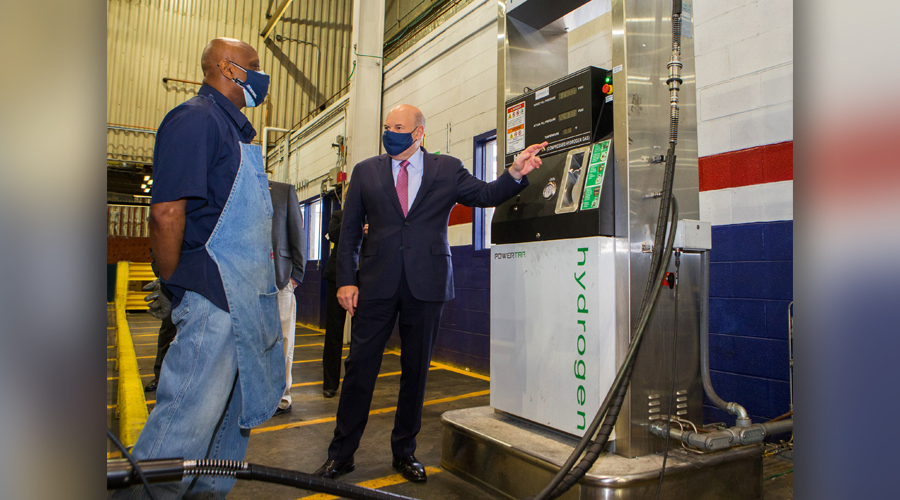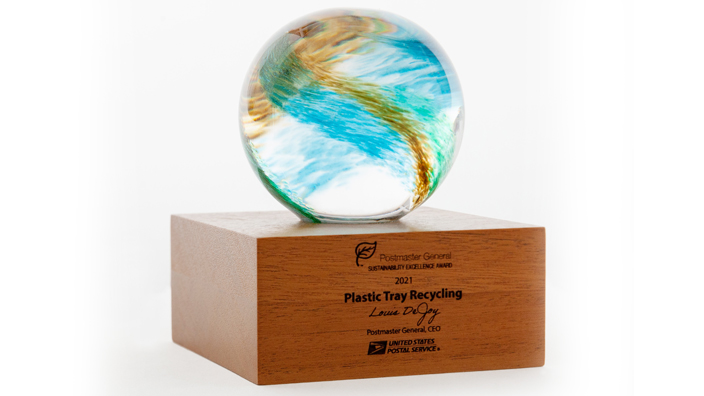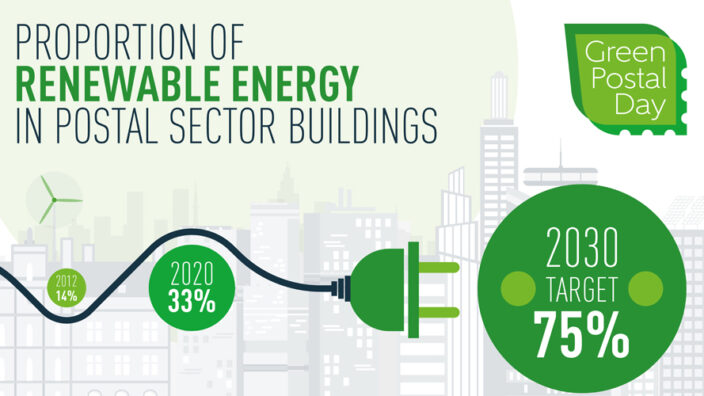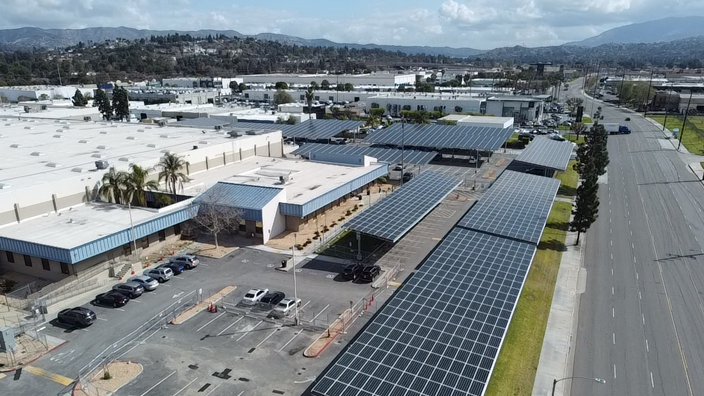Because it’s Energy Action Month — a time dedicated to moving from conservation awareness to concrete action — the Postal Service is spotlighting a promising energy-saving program piloted outside Washington, DC.
Hydrogen fuel cells, or HFCs, were substituted for the lead-acid batteries previously used to power industrial vehicles — such as pallet jacks and forklifts — at the Washington Network Distribution Center and the Surface Transfer Center in Capitol Heights, MD.
The result? Cost savings, cost avoidance, two federal awards and a blueprint for expansion.
The decision to test HFCs came after a Lean Six Sigma review of the liabilities of lead-acid batteries.
These include the environmental and worker dangers posed by sulfuric acid, the need for three batteries at once — one for use in the vehicle, one to be charging and one to be cooling off — and the time involved in changing them out, or about 96 hours of lost productivity a day.
HFCs offered extended run times, shortened refueling times, longer intervals between maintenance and more reliable voltage. These benefits, in turn, increased operator productivity.
HFCs are also a clean, zero-emission technology, with their only byproducts being water and some heat.
As for energy savings, the Washington Network Distribution Center alone saved 2.1 million kWh of electricity in its first year, which translated into a utility bill lighter by $188,000.
Because of the pilot’s clear success, the Postal Service plans to replicate the program in at least two processing centers in the future.
Four facilities were reviewed in 2020 and two were given the green light: the New Jersey Network Distribution Center in Jersey City and the Brooklyn Processing and Distribution Center in New York. These projects are underway now.
“The improvement in worker safety and the cost savings of hydrogen fuel cells are substantial,” said Jennifer Beiro-Réveillé, environmental affairs and corporate sustainability senior director. “We have high hopes that we can slowly but surely scale this technology to more sites nationwide.”
The program’s success has not gone unnoticed in the federal sector. It received the Federal Energy and Water Management Award for exceptional accomplishments in energy, water and fleet management, and the Power Award, for setting a standard for other federal agencies to follow, both from the Department of Energy.



